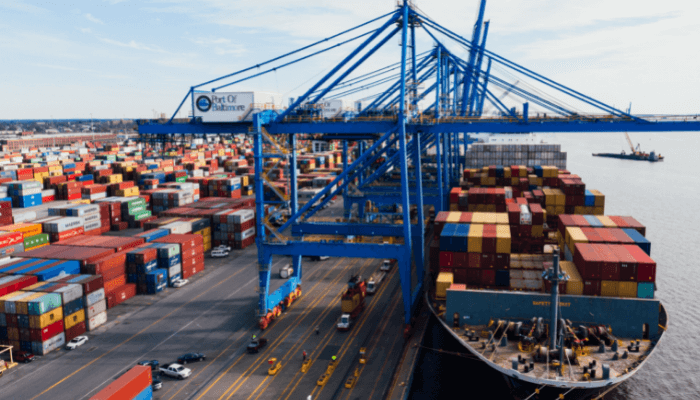What is Reverse Logistics and Recycling?
Logistics is the management of the flow of goods in a controlled and optimized manner between locations. This term can be traced back to the French military of the 1800s. Then, it meant the organization of troops, materials, and operations.
Logistics is still an important part of any military operation. However, these days, the term is most commonly used to refer to the supply chain of commercial cargo between locations.

What is Reverse Logistics?
Reverse logistics is an important branch of logistics aimed at value-recovery, cost reduction, and streamlining of the supply chain. It is also known as reverse logistics flow. The need to combat worldwide pollution and the ever-increasing competition among logistics organizations has made reverse logistics a necessity.
While logistics or forward logistics is generally referred to as the delivery of goods, from a supplier to their customers, reverse logistics is the return or collection of goods or materials from the customer after delivery.
What is the need to collect goods or materials from a customer after it has been already delivered?
Typically, reverse logistics comes into play when goods that have been delivered to a customer are not up to his requirements or such goods have reached the end of their life at the customer’s warehouse. It is also important to pick up materials for recycling or reuse and thereby reduce the overall carbon footprint.
Carbon Footprint
Carbon footprint is the collection of ‘earth-warming’ gases that are emitted by an organization or an individual. These include gases such as carbon dioxide (CO2), methane (CH4), nitrous oxide (N2O), ozone (O3), etc. Reduction in carbon footprint can prevent environmental pollution, save energy, and result in environmental sustenance.
Several transport and logistics organizations, among others, feature carbon footprint reduction prominently on their agendas. Zero-waste operations of certain organizations involve the customer as well as the manufacturer to help with reusing, recycling, or disposing of goods and materials in a responsible manner.
Examples of Reverse Logistics
- Return of a newly purchased, non-working electric kettle to the retailer, by its customer, for repair or replacement.
- A regional pharmaceutical distributor returning medicines that have reached their expiry date, to the manufacturer.
- A logistics operation picking up wooden pallets from a customer’s warehouse for reuse.
- Collection of hazardous waste from a customer’s premises.
The process or method of reverse logistics may vary between organizations. While some organizations measure customer satisfaction based on successful deliveries, others include reverse logistics in their measure of customer satisfaction as well. Let us look at some of the main reasons why goods are returned by customers.
Reasons for Return of Goods
Some of the main reasons for the return of goods are as follows:
Damages and Repairs
Goods delivered may be damaged or may require repair. In such cases it has to be returned to the supplier or the supplier has to send a technician or expert to get it fixed from the customer’s premises.
Wrong Product Delivered to Customer
It is possible that a wrong product has been picked and dispatched by the supplier’s logistics team. When the customer identifies a wrongly supplied product, he would inform the supplier who would then arrange to collect and replace it with the correct item.
Excess Quantity Delivered
Consider the scenario where excess quantities have been shipped to the customer. When this happens, either the customer or the supplier would notice this error and communicate with the other party. Then the supplier makes arrangements to have this excess quantity collected from the customer.
Materials for Reuse and Recycling
There are many packing materials that are reused several times before being finally discarded or condemned. These include items like plastic or wooden pallets, cardboard packing materials, aluminium or plastic containers, beer kegs, ropes, wraps, etc.
Goods and materials are also collected from customers after they have reached the end of their useful life for further processing and reuse or disposal by the manufacturer.
Dissatisfaction with the Product
It may be none of the above reasons and a customer might want to just return a product that does not meet his expectations. Acceptance of goods so returned would ultimately depend on the terms and conditions of sale.
In all the above cases, goods will have to be returned to their supplier and it is generally collected by the logistics operations of the supplying organization. This process of identifying and collecting goods is called reverse logistics.
Planning and Execution of Reverse Logistics
Reverse logistics have to be planned and managed meticulously so that additional costs on transport and handling of the materials being returned are minimal.
Imagine if every such collection required additional transport and labour for pickup from the customer and delivery back to the organization? It would result in drastically increased costs on account of resources and time.
The ideal way of planning reverse logistics is to have such goods collected immediately after completing a delivery to that customer. In other words, utilize resources that have already been deployed to the location of the customer for normal delivery.
There may be exceptional cases when the customer requests the supplier to pick up the goods immediately or within a given timeframe as he might want to use the space occupied by these goods for other storage.
The success of any reverse logistics operation would require clear communication and close cooperation between the logistics departments of the supplier as well as the customer.
Reverse logistics should not be seen as just the return of goods. The reason for the collection of materials for reuse or recycling from a customer is different from that of damaged or excess quantities delivered. There could be several factors behind the return of goods.
Analyzing Goods Returns
Logistics organizations should monitor and analyze the data on goods returns carefully as it is a clear indicator of what could possibly be going wrong with the logistics operations. Goods returns in most cases mean a financial loss to a company.
Type, Volume, or Value of Goods Returns
The type and volume of returned goods suggest if the problem lies with a large number of units of the same type or if it is just one-off instances of returns. Large scale returns of goods of the same type may require a product recall and subsequent steps such as replacement to customer and changes to production processes.
Condition of Products Returned
The physical condition of products returned from the customer can tell whether damages have happened during storage or transit. Appropriate actions to correct this situation will then have to be taken.
Frequency of Returns
When the frequency of goods being returned is more, it points to a pressing problem in the logistics or supply chain of the organization. This would call for increased monitoring and analysis of the returned products and the conditions under which they have been returned.
The Quality Assurance (QA) team of an organization plays an important role here in monitoring, analyzing the returns, and suggesting ways to avoid goods returns.
Logistics organizations may decide upon the goods returns thresholds or the tolerable limit up to which goods returns are acceptable.
Regular monitoring of returns data by an efficient QA team can help to pinpoint aberrations and direct logistics operations to take the necessary steps to avoid them.
Management of Return of Goods
Just as in inbound and outbound logistics, effective policies and procedures help to reduce goods returns. Subsequent to the collection of the returned goods, it is necessary to take speedy actions on those goods that require to be replaced or repaired.
Quick action from the supplier’s logistics department is necessary for the success of any reverse logistics operations. It helps in maintaining the good faith of customers and in customer retention. While it may not be possible to do away with goods returns or reverse logistics completely, costs can be reduced through an effective system of returns.
For an organization to implement a successful system of reverse logistics, it must have a clear-cut return policy that includes refund or replacement clauses and this must be communicated to its customers. It should have an efficient system of repairing or restoring products and materials. For all this, an efficient tracking or tracing system of the goods is necessary.
Another important component of reverse logistics is the responsible disposal of wastes. Accumulation of commercial and industrial wastes and the pollution caused by them has already damaged our environment beyond repair. Recycling, landfills, composting, and incineration are some of the methods of waste disposal. Of these, consigning wastes to a landfill site is the least preferred method.
Overall, the actions taken for reverse logistics should not be such that it affects the forward logistics of an organization or is carried out at exorbitant costs that affect the profits. Execution of reverse logistics should be such that it supports the lean operations of an organization.
While there are several stand-alone reverse logistics software or returns process management software available in the market today, most Supply Chain Management (SCM) and Enterprises Resource Planning (ERP) software that is used by modern logistics organizations support reverse logistics operations.
You might also like to read:
- What is Accessorial Charges in Logistics?
- What is Nearshoring in Logistics?
- What is Omnichannel Distribution in Logistics?
- What is “Shipped On Board” in Logistics?
- Guide to Cold Chain Logistics: Things You Must Know
Disclaimer: The authors’ views expressed in this article do not necessarily reflect the views of Marine Insight. Data and charts, if used, in the article have been sourced from available information and have not been authenticated by any statutory authority. The author and Marine Insight do not claim it to be accurate nor accept any responsibility for the same. The views constitute only the opinions and do not constitute any guidelines or recommendations on any course of action to be followed by the reader.
Do you have info to share with us ? Suggest a correction

About Author
Hari Menon is a Freelance writer with close to 20 years of professional experience in Logistics, Warehousing, Supply chain, and Contracts administration. An avid fitness freak, and bibliophile, he loves travelling too.
Latest Maritime law Articles You Would Like:
Latest News
- What is the Purpose of DG Shipping?
- What are Logistics Risks?
- How Port and Terminal Operators Can Control Emissions?
- Minimum Quantity Commitment (MQC) and Liquidated Damages in Container Shipping: Concept and Relevance
- MARPOL (The International Convention for Prevention of Marine Pollution For Ships): The Ultimate Guide
- The Ultimate Shipping Container Dimensions Guide
Subscribe To Our Newsletters
By subscribing, you agree to our Privacy Policy and may receive occasional deal communications; you can unsubscribe anytime.















